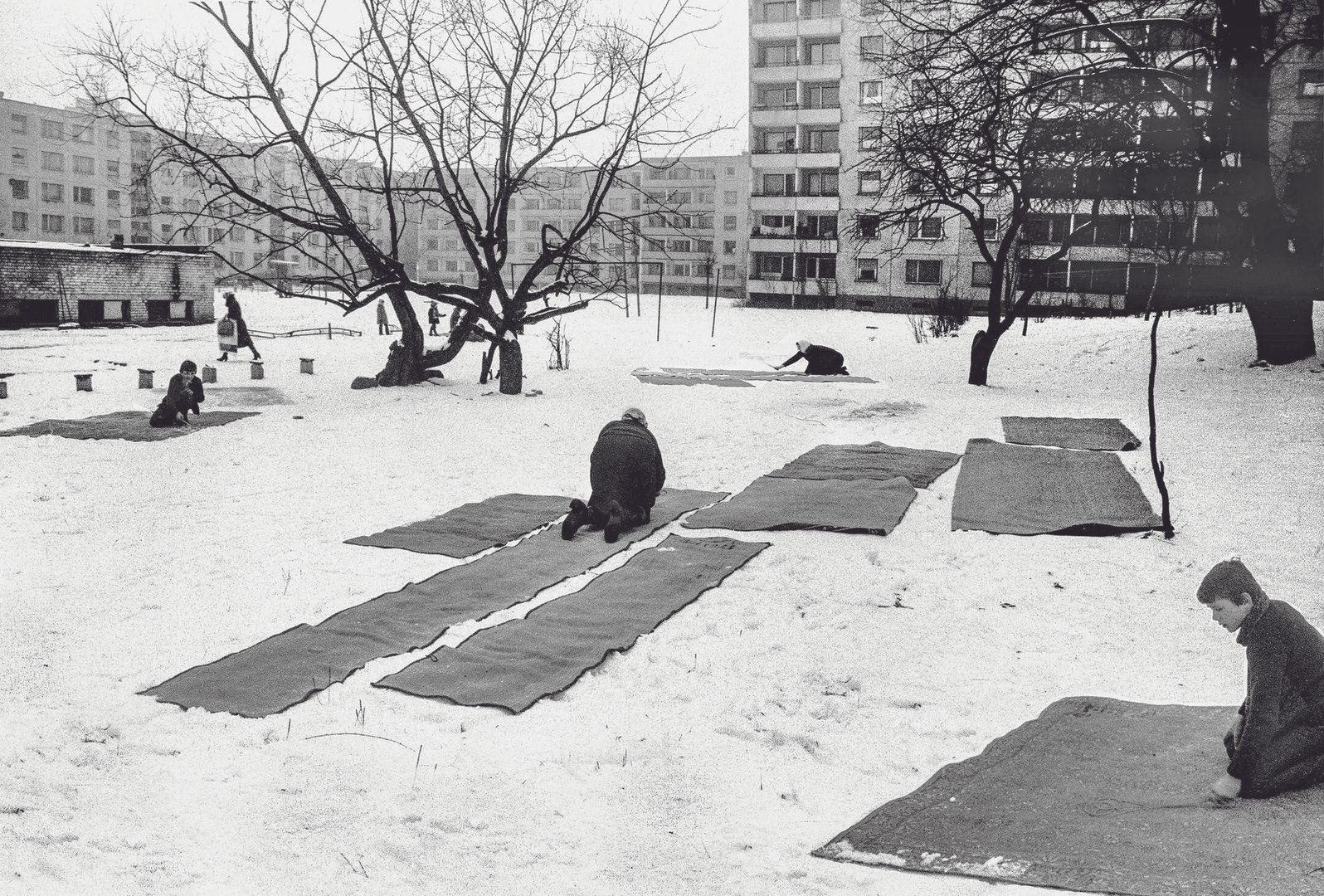The life and death of courtyards in Soviet-era mass construction districts

To this day, the majority of people in Lithuania's cities still live in Soviet-era apartment buildings. Built around the same time 40-60 years ago, all of them, scattered across Lithuania, have similar problems: they require more and more maintenance over time due to the use of poor-quality materials, and they are becoming less and less inhabited - which is why they are often described as "degrading", "run-down", or even "ghettos". This project is inspired by the public criticism of Soviet-era planning and architectural decisions in neighbourhoods, which, according to critics, have a detrimental effect on the sociality and community spirit of the residents. We were interested to find out how the same social ties that are lacking today were expressed in Soviet-era apartment blocks. Since the closest public space where the interests of apartment dwellers collide and overlap is their backyard, we decided to look for answers about their neighbours' way of (co)existing in their backyard. However, it was not possible to stay exclusively within the confines of the courtyard during the research, as the everyday practices we are interested in does not have such strict spatial boundaries - so the 'courtyard' in our project has expanded to other spaces of the apartment blocks.
See the project here.
Illustration by Zenonas Bulgakovas, "Švaros diena", 1975